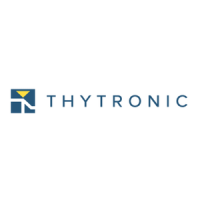6
6
SIF5600 - Manual - 03 - 2008
Identification
Identifying labels:
- a transparent adhesive label applied to the front panel comprising the complete code, the list of
protective functions, the operational range of the auxiliary supply voltage and t
he CE mark;
- connection diagram on the right hand side;
- the test certification label including the serial number and the test operators initials.
Current connections
The current input circuits do not have any automatic short-circuit devices for the current trans-
former secondary circuits, consequently it is necessary to avoid disconnecting such connections
prior to performing a short-circuiting step outwith the relay.
It
is recommended that cabling of a suitable thickness be used in order to limit wear of the CT sec-
ondary circuits.
Environmental Conditions
The SIF5600 relay must be used under the environmental conditions indicated in the technical speci-
fications.
For use under any other conditions, special arrangement must be made prior to commissioning (air
conditioning systems, humidity control etc...).
In the presence of any potentially polluting substances (dusts, corrosive substances etc.) appropri-
ate filter systems must be used.
Symbols
The manual uses CEI/IEC standardised symbols wherever available:
e.g.: 50 = ANSI code for Instantaneous overcurrent relay protective function
T
he following typographic formats are used in this manual:
Menu titles are highlighted in bold
e.g.: “Set”
E
xamples of display messages are shown using the Courier font,
e.g.: “SIF DK5600”
Abbreviations/definitions
MMI (Man Machine Interface) Operator panel on the front of the SIF5600 relay
ThySetter
Reading and parameterizing software
52 or CB (Circuit Breaker) Breaker
SW Software
FW Firmware
CT Current transformers
Start Starting of a protective function (instantaneous)
Trip Tripping of a protective function (timed)
PW break (Pilot Wire break) Pilot wire break
PW shorted (Pilot Wire shorted)Short circuiting of pilot wire
Self test
Self test
Blin1 Block input circuit (accelerated logic)
Blout1, Blout2 Block output circuit (accelerated logic)
IE Residual current
IL1...IL3 Phase currents.
Ex (x=1...8)IL1r...IL3r, IEr Phase and residual currents stored for eight events
Ex Cause (x=1...8) The function responsible for tripping in the eight events
Ex Phases (x=1...8) The phase on which the current has been detected which has ex
-
ceeded the eight event trip threshold
K1...K4 Output relays
tTR1...tTR4 Output relay minimum activation times
I curves (Independent, Curves A, B, C) Trip characteristics (time-independent or inverse time in
a
ccordance with curves A, B, C defined by IEC
Upgrade Upgrading the firmware
tB, tF Accelerated logic timers
tVAL Minimum duration of an open/close command (200 ms)
tTR Minimum trip persistence time of the output relay
En Abbreviation for energized, in reference to operation of the output
relay with “normally energized” programming
De
En Abbreviation for DeEnergized in reference to operation of the output
relay with “normally de-energized” programming
NoLatch
Output relay programmed with automatic reset
Latch Output relay programmed with manual reset (Latched)
Note: a note believed to be useful for the description

